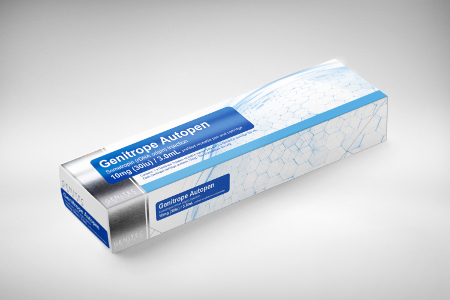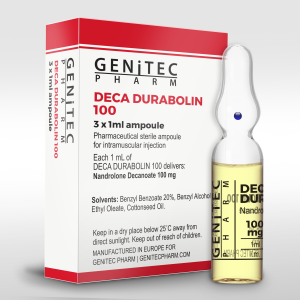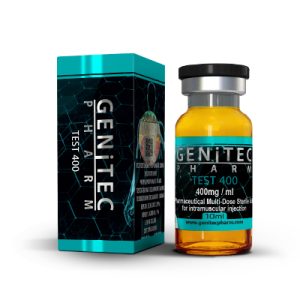Description
Manufacturer’s Description:
Human Growth Hormone, as used by athletes and bodybuilders, is a synthetic form of the natural hormone produced by the body in the pituitary gland. Very small amounts of HGH is required to produce muscle-building and fat-burning effects. As with most steroid-like compounds, there is risk of shutting down the body’s natural HGH production.
Human Growth Hormone exists at especially high levels during adolescence when it promotes the growth of tissues, protein deposition and the breakdown of subcutaneous fat stores. As humans age endogenous levels of GH decrease, but remain present in the body at a substantially lower level. In the body the actual structure of growth hormone is a sequence of 191 amino acids.
HGH stimulates growth in most body tissues, primarily due to increases in cell number rather than size. This includes skeletal muscle tissue, and with the exception of eyes and brain all other body organs. The transport of amino acids is also increased, as is the rate of protein synthesis. All of these effect are actually mediated by IGF-1 (insulin-like growth factor), a highly anabolic hormone produced in the liver and other tissues in response to growth hormone (peak levels of IGF-1 are noted approximately 20 hours after HGH administration). Growth hormone itself also stimulated triglyceride hydrolysis in adipose tissue, usually producing notable fat loss during treatment. GH also increases glucose output in the liver, and induces insulin resistance by blocking the activity of this hormone in target cells. A shift is seen where fats become a more primary source of fuel, further enhancing body fat loss.
Its growth promoting effect also seems to strengthen connective tissues, cartilage and tendons. This effect should reduce the susceptibility to injury (due to heavy weight training), and increase lifting ability (strength). HGH is also a safe drug for a positive urine test. Although its use is banned by athletic committees, there is no reliable detection method. This makes clear its attraction to (among others) professional bodybuilders, strength athletes and Olympic competitors, who are able to use this drug straight through a competition.
The average male athlete will usually need a dosage in the range of 2 to 4 IU per day to elicit the best results. Females utilize between 1 to 2 IU daily. Daily dosing is important, as HGH has a very short life span in the body. Peak blood concentrations are noted quickly (2 to 6 hours) after injection, and the hormone is cleared from the body with a half-life of only 20-30 minutes. The effects of this drug are also most pronounced when it is used for longer periods of time, often many months long.
Other drugs also need to be used in conjunction with HGH in order to elicit the best results. Your body seems to require an increased amount of thyroid hormones, insulin and androgens while HGH levels are elevated (HGH therapy in fact is shown to lower thyroid and insulin levels). To begin with, the addition of thyroid hormones will greatly increase the thermogenic effectiveness of a cycle. Insulin is sometimes used to increase receptor sensitivity to IGF-1, and reduce levels of IGF binding protein-1 allowing for more free circulating IGF-1 (growth hormone itself also lowers IGF binding protein levels). Steroids as well prove very necessary for the full anabolic effect of GH to become evident. Particularly something with a notable androgenic component such as testosterone or Trenbolone. The added androgen is quite useful, as it promotes anabolism by enhancing muscle cell size (remember GH primarily effects number of cells). Steroid use may also increase free IGF-1 via a lowering of IGF binding proteins. The combination of all of these (HGH, anabolics, insulin and T-3) proves to be the most synergistic combination, providing clearly amplified results. Always be mindful of the side-effects of the above mentioned drugs and combinations of them.
Serious side effects of HGH would be acromegaly, or a noticeable thickening of the bones (notably the feet, forehead, hands, jaw and elbows). The drug can also enlarge vital organs such as the heart and kidney, and has been linked to hypoglycemia and diabetes (presumably due to its ability to induce insulin resistance). Theoretically, overuse of this hormone can bring about a number of conditions, some life threatening. Such problems however are extremely rare. Among the many athletes using growth hormone, we have very few documented cases of a serious side effects. When used periodically at a moderate dosage, the athlete should have little cause for worry. Of course if there are any noticeable changes in bone structure, skin texture or normal health and well-being during use, HGH therapy should be completely halted.




